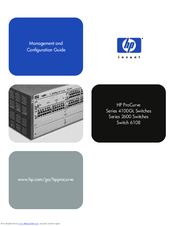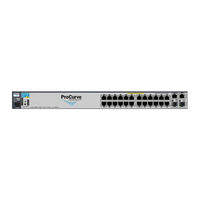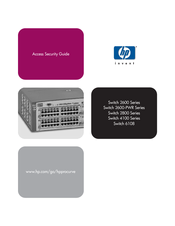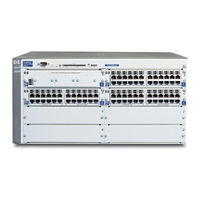HP Procurve Series 4100GL Manuals
Manuals and User Guides for HP Procurve Series 4100GL. We have 7 HP Procurve Series 4100GL manuals available for free PDF download: Management And Configuration Manual, Function Manual, Manual, Installation And Getting Started Manual, Operating, Read Me First
HP Procurve Series 4100GL Management And Configuration Manual (504 pages)
Table of Contents
-
-
Introduction
20 -
Conventions
20
-
-
-
-
-
-
Contents111
-
Overview
112 -
Inbound Telnet
113 -
Sessions
118
-
-
-
Contents131
-
Overview
132 -
IP Configuration
133 -
-
File Downloads144
-
-
-
8 Time Protocols
149 -
-
Contents173
-
Overview
174 -
Port Trunking
182-
-
Trunk Group190
-
-
-
-
Contents211
-
Cdp
223-
Introduction223
-
CDP Terminology224
-
Outgoing Packets225
-
Operating Notes238
-
-
-
-
Overview
242 -
-
-
The Primary VLAN246
-
Preparation267
-
Configuration268
-
IP Interfaces270
-
Port Monitoring271
-
Port Trunks271
-
-
-
Gvrp
273
-
-
-
Contents289
-
Overview
290 -
-
IGMP Terms292
-
-
Basic Operation293
-
Enhancements293
-
-
-
Advertisement
HP Procurve Series 4100GL Management And Configuration Manual (547 pages)
Table of Contents
-
Contents19
-
-
Introduction20
-
Conventions21
-
Contents27
-
Overview28
-
Contents35
-
-
-
-
Overview68
-
Support URL79
-
Port Status84
-
Alert Types86
-
-
-
Contents91
-
Overview92
-
OS Downloads104
-
Operating Notes109
-
Contents111
-
Overview112
-
Sessions118
-
-
-
Contents131
-
Overview132
-
IP Configuration133
-
IP Configuration134
-
9 Time Protocols
151-
Contents151
-
Overview152
-
Configured174
-
Contents175
-
-
-
-
Overview176
-
Port Trunking184
-
-
Group192
-
-
-
Contents
213 -
-
Overview214
-
Snmpv3 Enable218
-
SNMP Communities223
-
Cdp236
-
Introduction236
-
CDP Terminology237
-
Outgoing Packets238
-
CDP Packets248
-
Operating Notes251
-
-
-
-
Contents253
-
Overview254
-
The Primary VLAN258
-
Gvrp285
-
-
-
Overview302
-
IGMP Terms304
-
HP Procurve Series 4100GL Function Manual (306 pages)
Access Security Guide ProCurve 2600, 2600-PWR, 2800, 4100, 6108 Series
Table of Contents
-
-
Introduction18
-
Conventions21
-
-
-
Overview28
-
-
-
-
Contents45
-
Overview46
-
Terminology53
-
-
-
-
Contents101
-
Overview102
-
Terminology103
-
-
To Protect108
-
-
-
Contents133
-
Overview134
-
Terminology136
-
-
-
-
Contents161
-
Overview162
-
Terminology163
-
-
Behavior181
-
Advertisement
HP Procurve Series 4100GL Manual (300 pages)
Access Security Guide
Table of Contents
-
Contents25
-
Overview26
-
Contents45
-
Overview46
-
Terminology53
-
Overview61
-
Overview66
-
Contents75
-
Overview76
-
Contents101
-
Overview102
-
Terminology103
-
To Protect108
-
Authentication117
-
Contents133
-
Overview134
-
Terminology136
-
Behavior147
-
Contents161
-
Overview162
-
Terminology163
-
Behavior181
-
Contents183
HP Procurve Series 4100GL Installation And Getting Started Manual (90 pages)
Table of Contents
-
-
-
Summary20
-
-
LED Behavior30
-
-
-
Advertisement






